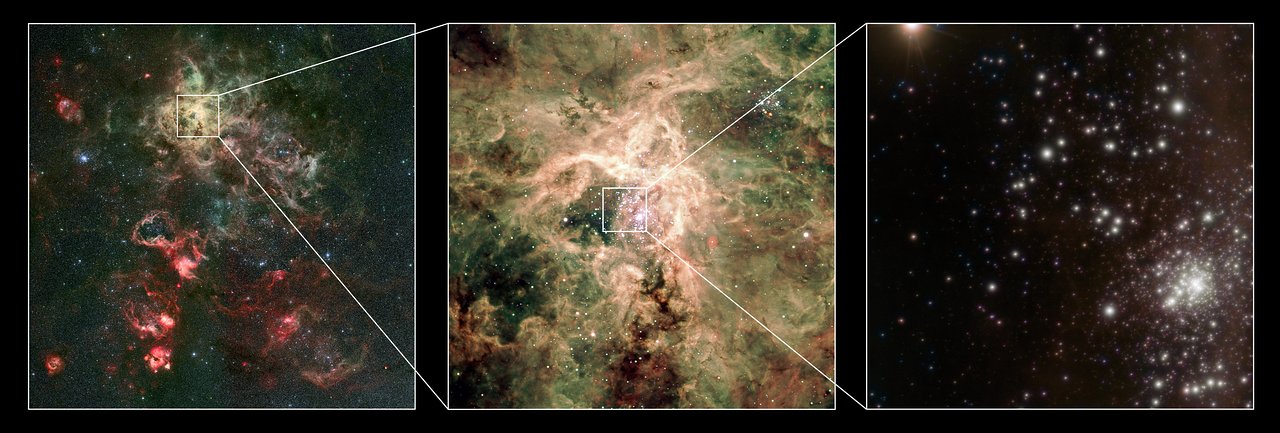ESO: Stars Just Got Bigger
Posted: Wed Jul 21, 2010 2:33 pm
Stars Just Got Bigger: A 300 Solar Mass Star Uncovered
European Southern Observatory | Science Release eso1030 | 21 July 2010
Astronomers find a 300 solar mass star
Science and Technology Facilities Council | 21 July 2010
Royal Astronomical Society | 21 July 2010
European Southern Observatory | Science Release eso1030 | 21 July 2010
Astronomers find a 300 solar mass star
Science and Technology Facilities Council | 21 July 2010
Royal Astronomical Society | 21 July 2010
Using a combination of instruments on ESO’s Very Large Telescope, astronomers have discovered the most massive stars to date, one weighing at birth more than 300 times the mass of the Sun, or twice as much as the currently accepted limit of 150 solar masses. The existence of these monsters — millions of times more luminous than the Sun, losing weight through very powerful winds — may provide an answer to the question “how massive can stars be?”
A team of astronomers led by Paul Crowther, Professor of Astrophysics at the University of Sheffield, has used ESO’s Very Large Telescope (VLT), as well as archival data from the NASA/ESA Hubble Space Telescope, to study two young clusters of stars, NGC 3603 and RMC 136a in detail. NGC 3603 (eso1005) is a cosmic factory where stars form frantically from the nebula’s extended clouds of gas and dust, located 22 000 light-years away from the Sun. RMC 136a (more often known as R136) (eso0613) is another cluster of young, massive and hot stars, which is located inside the Tarantula Nebula, in one of our neighbouring galaxies, the Large Magellanic Cloud, 165 000 light-years away.
The team found several stars with surface temperatures over 40 000 degrees, more than seven times hotter than our Sun, and a few tens of times larger and several million times brighter. Comparisons with models imply that several of these stars were born with masses in excess of 150 solar masses. The star R136a1, found in the R136 cluster, is the most massive star ever found, with a current mass of about 265 solar masses and with a birthweight of as much as 320 times that of the Sun.
In NGC 3603, the astronomers could also directly measure the masses of two stars that belong to a double star system[1], as a validation of the models used. The stars A1, B and C in this cluster have estimated masses at birth above or close to 150 solar masses.
...
These super heavyweight stars are extremely rare, forming solely within the densest star clusters. Distinguishing the individual stars — which has now been achieved for the first time — requires the exquisite resolving power of the VLT’s infrared instruments[2].
...
- The star A1 in NGC 3603 is a double star, with an orbital period of 3.77 days. The two stars in the system have, respectively, 120 and 92 times the mass of the Sun, which means that they have formed as stars weighing, respectively, 148 and 106 solar masses.
- The team used the SINFONI, ISAAC and MAD instruments, all attached to ESO’s Very Large Telescope at Paranal, Chile.


